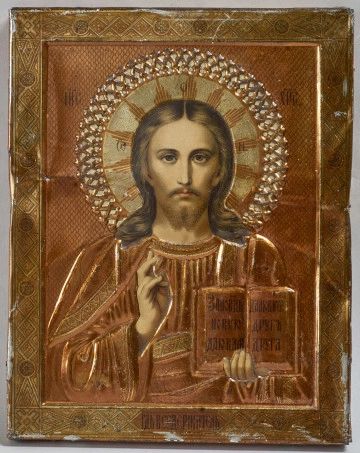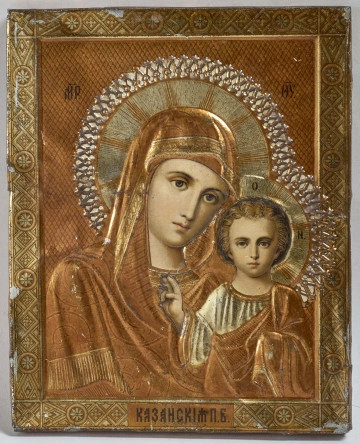
Saint Paraskevi
XIX/XX wiek
Castle Museum in Łańcut
Part of the collection: Ikony
The custom of celebrating Christmas in Eastern Christianity appears in the 4th century as a confirmation of the truth of the Incarnation of the Son of God ("The Word became flesh").
Starting from the Gospel accounts of Christ’s birth (Matthew 1:18-25; Luke 2:1-20) and the prophetic texts of the Old Testament, the portrayal of this event has been enriched with additional elements over the centuries. The background of the event is the mountain with a cave and a manger described in Isaiah’s prophecies, where the Child lies. Above Him, in the upper part of the composition, a star, or hemisphere is depicted, from which a triple ray of light emerges. Next to the cave, the Mother of God lies or sits on a bed. The manger is adored by animals — an ox and a donkey, as in Isaiah. From the 5th century, the figure of St. Joseph begins to appear in Nativity icons, though he is eventually moved to the background. The scene may be expanded with other themes indirectly related to the Nativity, such as angels announcing the Good News to the shepherds, the Adoration of the Shepherds, and the Adoration of the Magi, also called the Wise Men or the Three Kings. Other apocryphal scenes may also appear, such as the bathing of the Child, the doubting midwife Salome questioning Mary's virginity, and more.
Teresa Bagińska-Żurawska https://orcid.org/0000-0002-9243-3967
Author / creator
Object type
ikony
Technique
tempera, pozłotnictwo
Material
wood, chalk, distemper, gold
Creation time / dating
Owner
Muzeum - Zamek w Łańcucie
Identification number
Location / status

XIX/XX wiek
Castle Museum in Łańcut

20th century
Castle Museum in Łańcut

koniec XIX w.
Castle Museum in Łańcut
DISCOVER this TOPIC
Museum of King Jan III's Palace at Wilanów
DISCOVER this PATH
Educational path